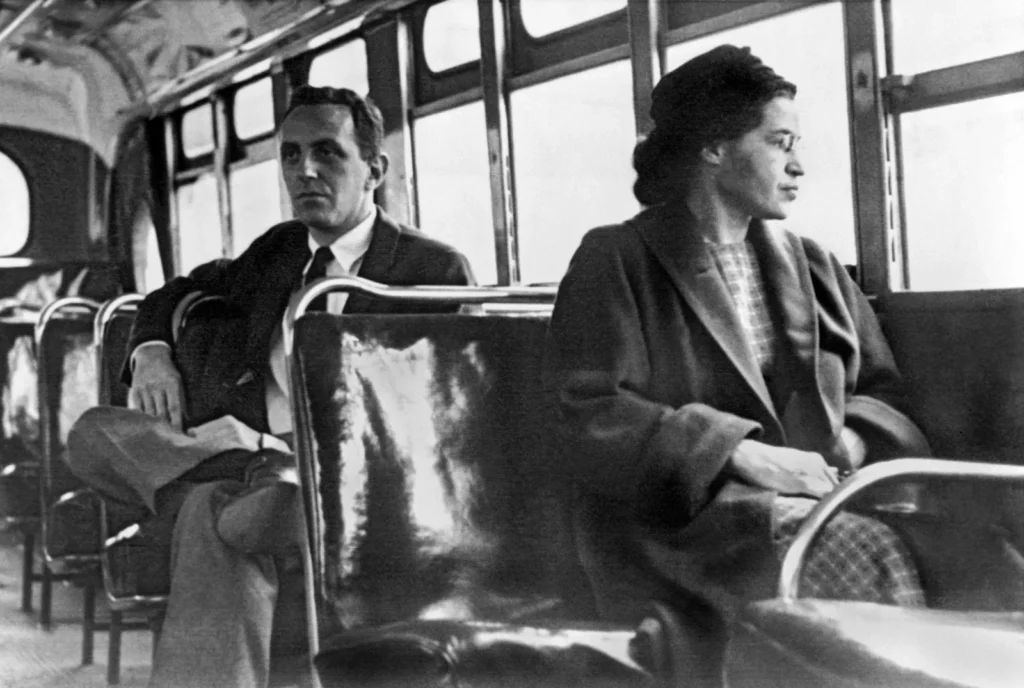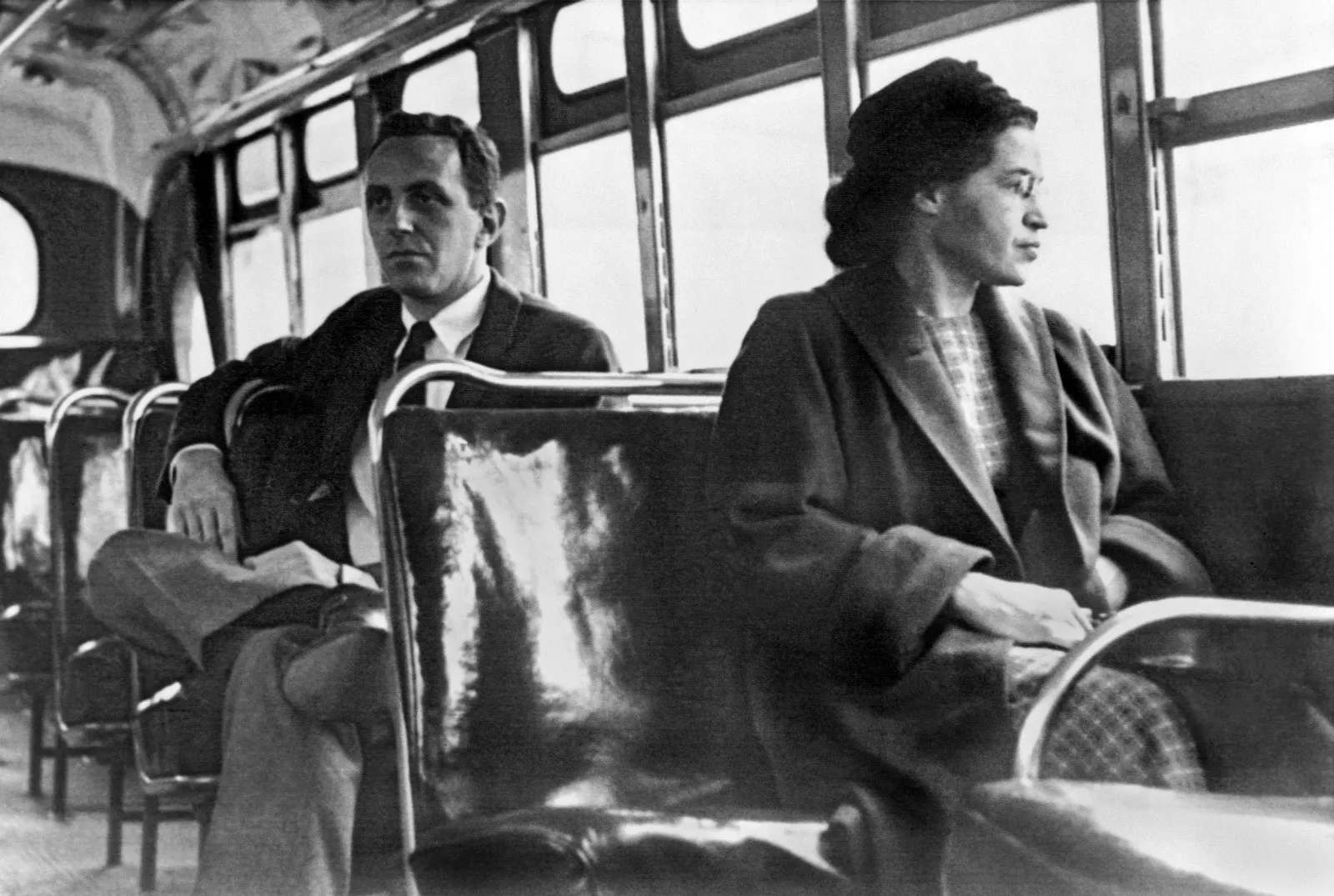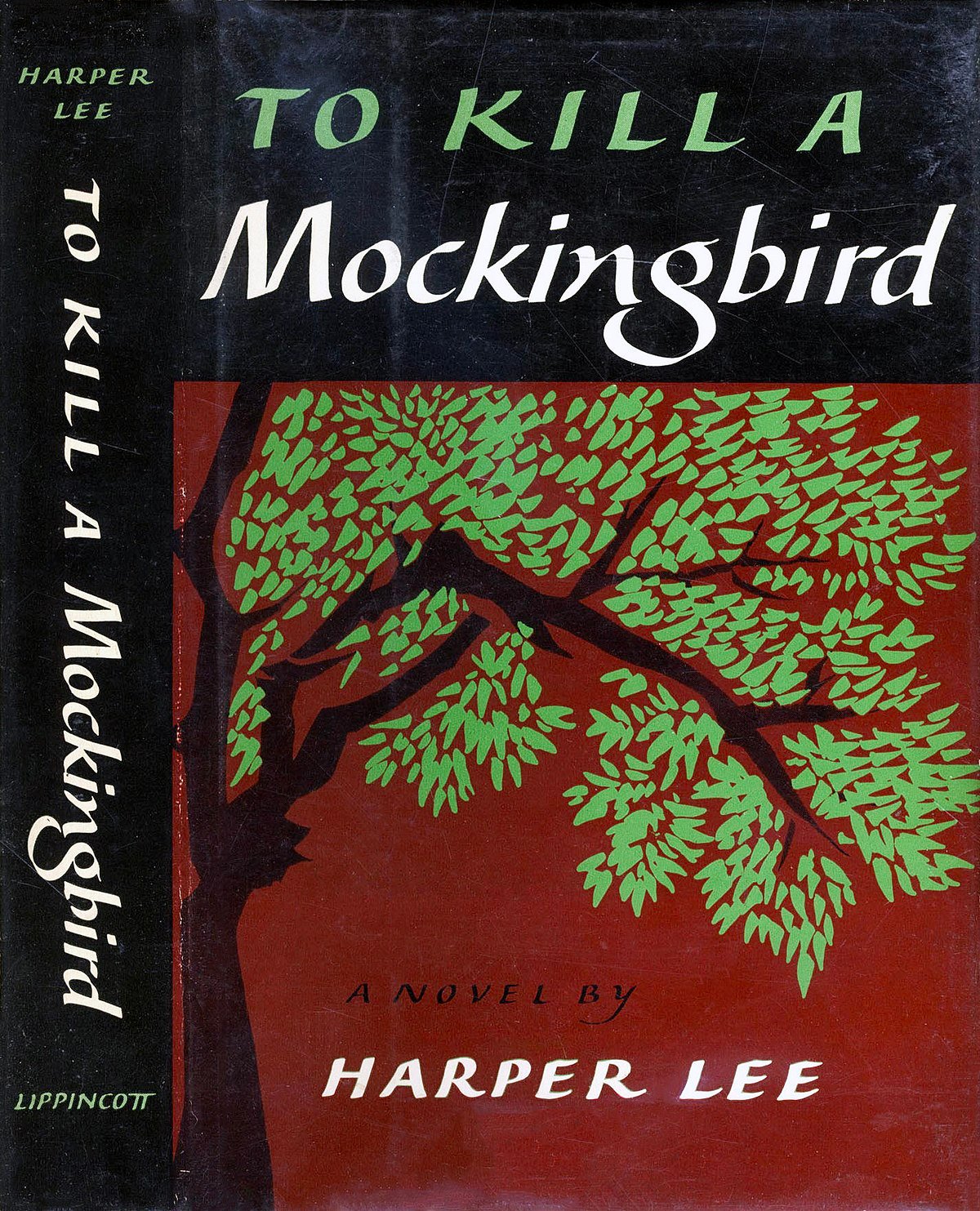Civil Rights in the 1950s

Despite the end of slavery almost a century before To Kill a Mockingbird was published in 1960, African Americans were still denied many of their basic rights. Although Lee sets her novel in the South of the 1930s, conditions were little improved by the early 1960s in America. The Civil Rights movement was just taking shape in the 1950s, and its principles were beginning to find a voice in American courtrooms and the law.
The famous 1954 U.S. Supreme Court trial of Brown v. the Board of Education of Topeka, Kansas declared the long-held practice of segregation in public schools unconstitutional and quickly led to desegregation of other public institutions. However, there was still considerable resistance to these changes, and many states, especially those in the South, took years before they fully integrated their schools.
Other ways blacks were demeaned by society included the segregation of public rest rooms and drinking fountains. Blacks were also forced to ride in the back of buses. This injustice was challenged by a mild-mannered department store seamstress named Rosa Parks; she was arrested for failing to yield her seat to a white passenger.
Civil rights leaders began a successful boycott of the bus system in Montgomery, Alabama, on December 5, 1955. The principal leader of the boycott was the Reverend Martin Luther King, Jr. Along with other black pastors, such as Charles K. Steele and Fred Shuttlesworth, King organized the Southern Christian Leadership Conference in January, 1957. It was one of the leading organizations that helped end legal segregation by the mid-1960s.
The same year that Lee won a contract for the unfinished manuscript of To Kill a Mockingbird, Congress passed the Civil Rights Act of 1957. The act provided penalties for the violation of voting rights and created the Civil Rights Commission. However, African Americans would not see protection and enforcement of all of their rights until well into the next decade.
The Civil Rights Act of 1964, the Voting Rights Act of 1965, and the Civil Rights Bill of 1968 were eventually passed. These laws banned racial discrimination from public places, workplaces, polling places, and housing.
Compare & Contrast
1930s: During the Great Depression, unemployment rose as high as 25%; the New Deal program of government-sponsored relief leads to a deficit in the federal budget.
1960: After a decade of record-high American production and exports, unemployment dips to less than 5 percent. The federal government also runs a small surplus.
Today: Unemployment runs between 5 and 6 percent. The federal government works to reduce a multi-billion dollar deficit amidst an increasingly competitive global economy.
1930s: Schools are racially segregated; emphasis in the classroom was on rote learning of the basics.
1960: Although backed up by force at times, school integration laws were being enforced; the 1959 launch of the Soviet satellite Sputnik leads to math and science gaining increased importance.
Today: School populations are as racially diverse as their communities; classes include a focus on combining subjects and problem-solving skills.
1930s: Only property owners who were white and male could serve on juries.
1960: Women and minorities could now serve on juries. The Supreme Court ruled that eliminating jurors from duty on the basis of race is unconstitutional. However, many trials still exclude blacks and Hispanics.
Today: All registered voters are eligible to serve on juries. However, in many cases prosecution and defense teams aim to create a jury with a racial balance favorable to their side.
1930s: A big trial serves as an entertainment event for the whole town. A child who has been to the movies is unusual.
1960: Television was becoming the dominant form of popular entertainment, while families might see films together at drive-in movie theaters.
Today: Although television and film are still large presences, computers and computer games swiftly gain a share in the entertainment market. Trials still provide public entertainment and are featured on their own cable channel.
The justice system was similarly discriminatory in the 1950s; Blacks were excluded from juries and could be arrested, tried, and even convicted with little cause. One notable case occurred in 1955, when two white men were charged with the murder of Emmett Till, a fourteen-year-old African American youth who had allegedly harassed a white woman.
Like the jury in Tom Robinson’s trial, the jury for the Till case was all white and all male; the trial was also held in a segregated courtroom. The defense’s case rested on the unlikely claims that the corpse could not be specifically identified as Till and that the defendants had been framed; and yet the jury took only one hour to acquit the men of all charges. The men later admitted their crimes to a journalist in great detail, but were never punished for the murder.
Parallels with To Kill a Mockingbird
The events surrounding race relations in the 1950s and 1960s have a strong correspondence with those in To Kill a Mockingbird, set nearly thirty years earlier. The South, which was still steeped in its agricultural traditions, was hit hard by the Great Depression. Small farmers like Lee’s Walter Cunningham Sr. often could not earn enough cash from their crops to cover their mortgages, let alone living expenses. Lee’s novel captures the romanticism many white people associated with the Southern way of life, which many felt was being threatened by industrialization.
Part of this tradition, however, protected such practices as sharecropping; tenant farmers would find themselves virtually enslaved to landowners who provided them with acreage, food, and farming supplies. The desperation sharecroppers felt was brilliantly depicted in Erskine Caldwell’s 1932 novel, Tobacco Road. The racism of the South—many blacks were sharecroppers—is also portrayed in Richard Wright’s novel Uncle Tom’s Children (1938).
There was little opportunity for African Americans to advance themselves in the South. Schools were segregated between whites and blacks, who were not allowed to attend white high schools. Blacks were therefore effectively denied an education. In the early 1930s, there was not a single high school built for black students in the South. The result was that nearly half of all blacks in the South did not have an education past the fifth grade.
In To Kill a Mockingbird, Calpurnia tells the children she is only one of four members of her church who can read. Ironically, the Depression helped to change that when northern school boards began integrating schools to save the costs of running separate facilities. President Franklin Delano Roosevelt’s New Deal also led to the creation of the National Youth Administration (1935) and its Division of Negro Affairs. These helped teach black students to read and write.
The Depression was particularly painful to blacks, who, in the 1920s, were already grossly underemployed. With worsening economic times, however, they found that even the menial jobs they once had—like picking cotton—had been taken by whites. The New Deal helped here, too, with the creation of the Federal Housing Administration, the Works Progress Administration, and other agencies that assisted poor blacks in obtaining jobs and housing.
Yet the oppressive society in the South often prevented blacks from taking advantage of this government assistance. Racist groups like the Ku Klux Klan and the Black Shirts terrorized blacks out of their jobs. The vigilante practice of lynching was still common in the South in the early 1930s. Only North Carolina, South Carolina, Kentucky, and Alabama had laws specifically outlawing lynching as an illegal activity. (Surprisingly, only two northern states had similar laws).
By 1935, however, public outrage had reached a point where lynchings were no longer generally tolerated, even by whites. In Lee’s novel, for instance, the local sheriff tries to warn Atticus Finch of a possible lynch mob while a concerned citizen, B. B. Underwood, is prepared to turn them away from the jail with his shotgun.



